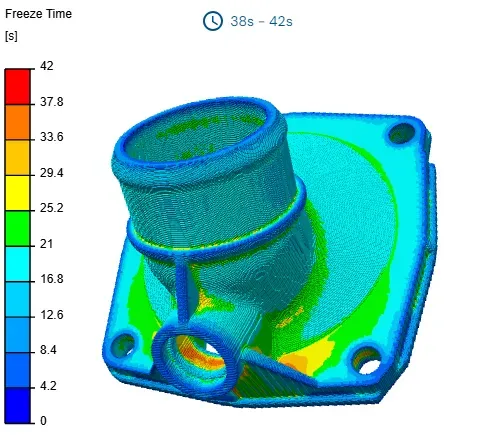by Arnaud Divialle
In the current economic climate, a significant number of plastic injection molds are now designed and manufactured in China. But as industry professionals will privately reveal, the lower pricing that offshoring provides sometimes comes with a hidden cost: North American molders and mold makers commonly face challenges maintaining quality control over their Chinese suppliers.
Many overseas suppliers or manufacturing partners exhibit high turnover rates, which can result in molds of varying quality. While some certainly excel, others frequently require multiple design iterations, adding to costs and extending lead times.
To ensure the consistent delivery of molds that meet quality standards, companies implement diverse strategies. Chinese mold makers already have one advantage over American companies who have outsourced: proximity to the factory. Some American businesses will opt to establish offices in China for direct oversight of employee turnover, skillsets, and training. Others dispatch their experts to China for comprehensive design reviews and tool trials, which helps mitigate the impact of time zone differences and smooths out any cultural nuances in communication.
Yet another seemingly more cost effective approach is to create extensive guidelines and standards for local and overseas partners to follow, as well as exhaustive verification checklists that analysts in North America use to assess the molds delivered by the suppliers. Although it’s labor-intensive, this approach improves the chances that every mold released adheres to a company’s exacting quality requirements. Some highly efficient companies perform these checks daily, taking advantage of time zone differences to ensure overseas suppliers are briefed to make any design adjustments the next workday.
These approaches work best when parts are relatively simple and designs change infrequently. But as more manufacturers push into advanced applications, part geometries become more challenging, mold cooling requirements become more stringent, and tolerances tighten. In that context, a single design oversight from a supplier can throw off delivery timelines by days or even weeks.
Shifting industry dynamics

While the challenges above are primarily related to mold design and tool verification, a second wave of complications can emerge once those tools reach production.
Companies are now finding that these best practices may no longer be sufficient. Industry dynamics have shifted: parts and molds have increased in complexity; injection presses have advanced from hydraulic to electric, and now offer more numerical control; chillers are more highly varied; and innovative resin types, including recycled materials, are now being used. All these factors further complicate efforts to efficiently monitor quality control.
The shift toward sustainable materials and tighter performance specs have put external pressure on manufacturing cost margins. Cooling design, against that backdrop, represents a key opportunity to maximize quality and cycle time. When cooling strategies from overseas suppliers go unchecked, the risk of warpage, short shots, or internal stresses increases. These issues lead to rework that defeats any theoretical cost advantage of offshore tooling.
To keep up with these evolving conditions, companies are increasingly turning to simulation tools, which can help analysts rapidly assess quality and provide quantifiable feedback to overseas suppliers. But traditional mold flow analysis (MFA) packages often require days to produce results, which renders them unsuitable for the kind of daily checks that companies need to meet the pace of business today.
In addition, many traditional simulation tools are expensive to license and require highly trained CAE experts to operate. That puts them out of reach for teams focused on day-to-day verification rather than long-term optimization. For injection mold makers and their compression molder brethren, who may check several tools a week — or even per day — those solutions simply aren’t practical.
Get the most from your overseas suppliers

That’s where SimForm comes in. The speed and user-friendly features of the software make it a natural fit for this use case. Molders and mold makers are empowered to assess tool designs from overseas suppliers on a daily basis. With continuous evaluations of design improvements, companies can ensure changes to injection pins or water lines do not compromise part quality or significantly increase costs.
SimForm allows users to upload CAD data and simulate thermal behavior in under 15 minutes. That means analysts in North America can review a mold from overseas during their morning shift, run a quick thermal analysis, and send clear, data-backed feedback to the supplier before the end of their own workday.
SimForm’s “compare mode” makes this even easier. Teams use this feature to quickly visualize the differences between multiple design iterations and identify changes in cooling performance or thermal behavior at a glance. Daily review and iteration are far more efficient with the convenience of compare mode rather than toggling between CAD files or manually noting revisions.
Ultimately, the design team sees tighter iteration loops and more proactive troubleshooting without expensive travel or delays. Companies can quickly evaluate if cooling line placements are sufficient, if predicted ejection temperatures are within range, or if thermal gradients could cause visible defects. By making thermal simulation part of a daily routine, SimForm bridges the gap between design and manufacturing across continents.
In an era of dynamic industry changes, this dynamic cloud-based technology can become a valuable ally in maintaining quality and efficiency in modern plastic injection molding processes. Research firm Deloitte has asserted that “Digital technologies are a key enabler to risk mitigation and assessing external risks in terms of components or materials” in their study of the global manufacturing supply chain.
For teams navigating global supply chains, the ability to catch cooling or design issues before steel is cut — or immediately after a new iteration — makes all the difference. SimForm supports that agility. Unlike post-production injection mold quality assurance, an early cooling simulation heads off issues before they rear their heads. Mold makers, overseas manufacturers, and OEMs alike benefit from fast, up-front insights that help to maintain high standards even when working with remote or variable-quality suppliers.
Learn more about how SimForm helps Mold Makers
To experience how SimForm can help your organization maintain high quality molds, sign up for a free trial.